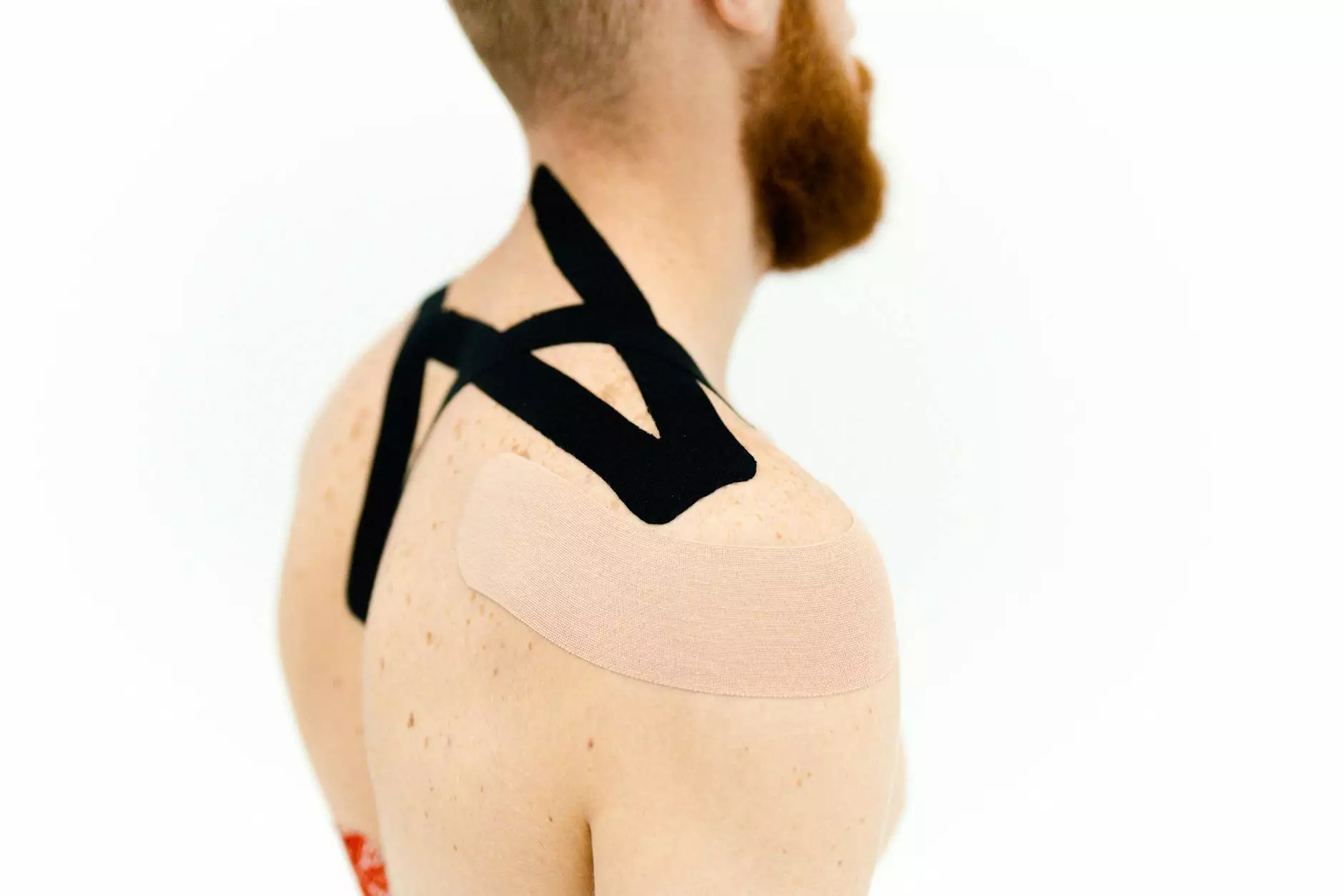Understanding the Inferior Glide of Shoulder: The Key to Shoulder Mobility and Health

The shoulder joint is one of the most complex and versatile joints in the human body, enabling a wide range of motion necessary for daily activities and athletic pursuits. Among the various biomechanics that influence shoulder function, the inferior glide of shoulder plays a crucial role in maintaining optimal mobility, stability, and overall health of the shoulder complex. Whether you are a healthcare professional, a chiropractor, or an individual seeking to understand shoulder mechanics better, gaining a comprehensive understanding of this specific movement is essential for effective treatment, injury prevention, and rehabilitation.
What Is the Inferior Glide of Shoulder?
The inferior glide of shoulder refers to the downward movement of the humeral head within the glenoid cavity during various shoulder motions. It is a critical component of joint mobility that allows the arm to freely elevate, extend, and rotate without causing impingement or discomfort. This glide is often facilitated during shoulder movements such as abduction and flexion, ensuring the humeral head remains centrally aligned within the socket, thereby preserving proper joint mechanics.
The Biomechanics of Shoulder Movement and the Role of Inferior Glide
Understanding Normal Shoulder Kinematics
The shoulder joint, or glenohumeral joint, is a ball-and-socket joint that allows for an extensive range of motion. Achieving fluid and pain-free movement depends on the harmonious interaction of bones, muscles, ligaments, and the synovial fluid within the joint. Normal biomechanics involve coordinated gliding, rolling, and spinning of the humeral head within the glenoid fossa, with the inferior glide being integral to this process.
Function of Inferior Glide During Shoulder Elevation
As the arm elevates, particularly during abduction and flexion, the humeral head must glide inferiorly to accommodate the movement and prevent impingement with the acromion and other structures. This inferior glide provides space for smooth motion and distributes load across the joint, reducing stress on the surrounding tissues.
Significance of Inferior Glide in Shoulder Mobility
- Prevents Impingement: Proper inferior glide ensures the rotator cuff tendons and subacromial space are not compressed during movement.
- Maintains Joint Stability: Facilitates dynamic stability by balancing movement and preventing excessive translation of the humeral head.
- Enhances Range of Motion: Supports full elevation and extension, critical for functional and athletic activities.
- Distributes Mechanical Load: Enables even load-sharing across the joint surfaces, decreasing wear and tear.
Clinical Relevance: The Inferior Glide of Shoulder in Healthcare and Medical Practice
Assessment and Diagnosis
Clinicians, including chiropractors and orthopedic specialists, assess the quality of the inferior glide of shoulder during physical examination. Techniques such as joint play testing and proprioception assessments help determine if this glide is intact or restricted. Limitations in inferior glide may indicate issues like impingement syndromes, rotator cuff tears, or shoulder instability.
Common Conditions Associated with Impaired Inferior Glide
- Rotator Cuff Tendinopathy: Degeneration or inflammation of rotator cuff tendons often correlates with impaired inferior glide, contributing to pain and restricted motion.
- Shoulder Impingement Syndrome: Reduced inferior glide can lead to increased friction and impingement between humeral head and acromion.
- Glenohumeral Instability: Excessive or insufficient glide, depending on the pathology, can contribute to instability or laxity of the joint.
- Frozen Shoulder (Adhesive Capsulitis): Characterized by stiffness and limited inferior glide, leading to significant restrictions in mobility.
Rehabilitation and Treatment Strategies for Restoring Inferior Glide
Manual Therapy and Chiropractic Interventions
Chiropractors and manual therapists employ targeted techniques to restore optimal inferior glide of shoulder. These include mobilization and manipulation therapies that gently encourage the humeral head to glide inferiorly, re-establishing normal joint mechanics.
Exercise-Based Approaches
- Stretching Exercises: Focused on improving flexibility of surrounding muscles, such as the posterior shoulder capsule and pectoral muscles, which can restrict inferior glide.
- Strengthening Programs: Emphasize strengthening of rotator cuff and scapular stabilizers to support joint stability and proper glide mechanics.
- Proprioceptive Drills: Enhance neuromuscular control, helping the joint maintain proper alignment during movement.
Modern Treatments and Modalities
Advancements in medical technology and physical therapy now include techniques like:
- Instrument-Assisted Soft Tissue Mobilization (IASTM): Improves tissue extensibility around the shoulder.
- Motor Control and Neuromuscular Re-Education: Re-establish proper joint kinematics, including inferior glide patterns.
- Instrument-Based Adjustments: Utilizing specialized tools to precisely address joint restrictions without over-manipulation.
Maintaining Long-term Shoulder Health and Preventing Issues
Prevention is pivotal in shoulder health. Incorporate the following strategies to maintain optimal inferior glide of shoulder and overall joint integrity:
- Regular Flexibility and Strengthening Exercises: Focus on shoulder mobility, rotator cuff strengthening, and scapular stabilization.
- Ergonomic Adjustments: Modify workspaces and daily movements to reduce undue stress on the shoulder.
- Proper Warm-up and Cool-down During Physical Activity: Prevent injuries and support joint health.
- Routine Professional Assessments: Seek chiropractic or medical evaluations if experiencing persistent shoulder discomfort or limited mobility.
Innovation and Future Directions in Shoulder Health
The field of shoulder rehabilitation is continually evolving with novel approaches such as regenerative medicine, minimally invasive procedures, and advanced imaging technologies. These innovations aim to improve diagnosis, enhance treatment efficacy, and personalize rehabilitation plans for optimal outcomes, especially regarding the inferior glide of shoulder.
Choosing the Right Experts and Facilities for Shoulder Care
Whether seeking chiropractic care, medical intervention, or physical therapy, it is essential to work with professionals experienced in shoulder biomechanics and rehabilitation. Facilities specializing in nuanced joint assessments, like those offered by established organizations such as iaom-us.com, provide cutting-edge treatment options coupled with comprehensive educational resources for patients and practitioners alike.
Final Thoughts: Prioritizing Shoulder Function Through Knowledge and Care
Understanding the inferior glide of shoulder underscores the importance of nuanced joint mechanics in maintaining mobility, stability, and overall upper limb health. Proper assessment, targeted treatment, and proactive prevention can significantly reduce the risk of shoulder injuries and improve quality of life. Continuous education, ongoing research, and advanced clinical techniques are key to unlocking the full potential of shoulder health management for patients and practitioners worldwide.
Remember:
A healthy shoulder isn’t just about lifting your arm; it’s about preserving the complex synergy of movement and stability that allows you to perform everyday tasks effortlessly and sports with confidence. Support your shoulder health today by understanding its biomechanics and seeking expert care when necessary.





